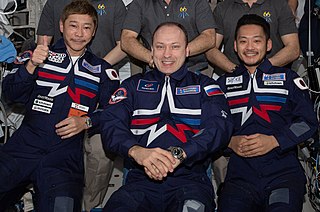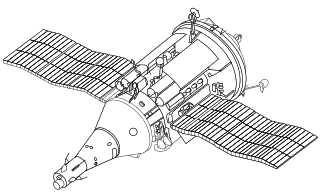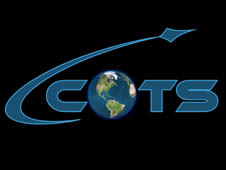Related Research Articles

Space tourism is human space travel for recreational purposes. There are several different types of space tourism, including orbital, suborbital and lunar space tourism.
Human spaceflight programs have been conducted, started, or planned by multiple countries and companies. The age of manned rocket flight was initiated by Fritz von Opel who piloted the world's first rocket-propelled flight on 30 September 1929. All space flights depend on rocket technology; von Opel was the co-designer and financier of the visionary project. Until the 21st century, human spaceflight programs were sponsored exclusively by governments, through either the military or civilian space agencies. With the launch of the privately funded SpaceShipOne in 2004, a new category of human spaceflight programs – commercial human spaceflight – arrived. By the end of 2022, three countries and one private company (SpaceX) had successfully launched humans to Earth orbit, and two private companies had launched humans on a suborbital trajectory.

The Ansari X Prize was a space competition in which the X Prize Foundation offered a US$10,000,000 prize for the first non-government organization to launch a reusable crewed spacecraft into space twice within two weeks. It was modeled after early 20th-century aviation prizes, and aimed to spur development of low-cost spaceflight.

The Almaz program was a highly secret Soviet military space station program, begun in the early 1960s.

Nancy Jan Davis is a former American astronaut. A veteran of three space flights, Davis logged over 673 hours in space. She is now retired from NASA.

Vladimir Georgiyevich Titov is a retired Russian Air Force Colonel and former cosmonaut. He has participated in four spaceflight missions. The catastrophic explosion of a Soyuz rocket in 1983 led to him being one of only four people to use a launch escape system. He is married to Alexandra Kozlova, they have two children.

Private spaceflight refers to spaceflight developments that are not conducted by a government agency, such as NASA or ESA.

The TKS spacecraft was a Soviet spacecraft conceived in the late 1960s for resupply flights to the military Almaz space station.

Peter H. Diamandis is an American marketer, engineer, physician, and entrepreneur of Greek-American ethnicity. He is best known for being founder and chairman of the X Prize Foundation, cofounder and executive chairman of Singularity University and coauthor of The New York Times bestsellers Abundance: The Future Is Better Than You Think, The Future is Faster than You Think, How Converging Technologies Are Transforming Business, Industries, and Our Lives and BOLD: How to Go Big, Create Wealth, and Impact the World. He is former CEO and cofounder of the Zero Gravity Corporation, cofounder and vice chairman of Space Adventures Ltd., founder and chairman of the Rocket Racing League, cofounder of the International Space University, cofounder of Planetary Resources, cofounder of Celularity, founder of Students for the Exploration and Development of Space, vice chairman and cofounder of Human Longevity, Inc.
Astrotech Corporation, formerly Spacehab Inc., is a technology incubator headquartered in Austin, Texas. Astrotech uses technology sourced internally and from research institutions, government laboratories, and universities to fund, manage and sell start-up companies.

Commercial Orbital Transportation Services (COTS) was a NASA program to coordinate the development of vehicles for the delivery of crew and cargo to the International Space Station by private companies. The program was announced on January 18, 2006 and successfully flew all cargo demonstration flights by September 2013, when the program ended.
The Heinlein Prize for Advances in Space Commercialization, generally known as the Heinlein Prize, was founded in 1988 to reward individuals who make practical contributions to the commercialization of space. The Heinlein Prize offers a cash award of $500,000 to one or more individuals for practical accomplishments in the field of commercial space activities awarded by the Heinlein Prize Trust.

The X Prize Cup is a two-day air and space exposition which was the result of a partnership between the X Prize Foundation and the State of New Mexico that began in 2004 when the Ansari X-Prize was held. This led to plans to build the world's first true rocket festival. Three X-Prize Cups have been held: in 2005, 2006 and 2007. Each X Prize Cup hosts different events and demonstrations, such as rocket-powered bicycles, rocket jet packs; but particularly notable are the Lunar Lander Challenge and the Space Elevator Games. 85,000 visitors attended the 2007 X Prize Cup. Although there was no X Prize Cup in 2009, there was a Lunar Lander Challenge.
Excalibur Almaz was a private spaceflight company which planned to provide a variety of deep space crewed exploration missions, micro-gravity science, and payload delivery. EA also aimed to offer Low Earth Orbit cargo and crew delivery and return.
Jerome Pearson was an American engineer and space scientist best known for his work on space elevators, including a lunar space elevator. He was president of STAR, Inc., and has developed aircraft and spacecraft technology for the United States Air Force, DARPA, and NASA. He held several patents and was the author of nearly 100 publications in aircraft, spacecraft, electrodynamic tethers, SETI, and global climate control.
Len Cormier worked for many years in the U.S. aerospace industry, in government, large industry, and as a private entrepreneur. He developed many creative proposals for reusable launch vehicles, and was present at several key events of the early Space Age.

Lunar tourism may be possible in the future if trips to the Moon are made available to a private audience. Some space tourism startup companies are planning to offer tourism on or around the Moon, and estimate this to be possible sometime between 2023 and 2043.
Vector Launch, Inc. is an American space technology company which aims to launch suborbital and orbital payloads. Vector Launch declared bankruptcy in December 2019 and re-emerged in October 2020.

The billionaire space race is the rivalry among entrepreneurs who have entered the space industry from other industries - particularly computing. This private spaceflight race involves sending privately developed rockets and vehicles to various destinations in space, often in response to government programs or to develop the space tourism sector.
References
- ↑ Foust, Jeff (2007-04-30). "Opening wallets, closing windows". The Space Review.
- ↑ Vrazo, Fawn (1988-05-16). "In the U.S. space capital, he's boosting Soviet rockets". The Philadelphia Inquirer.
- ↑ Broad, William J. (1987-12-01). "Americans See Rocket In Soviet". The New York Times.
- ↑ Skoler, Michael (1991-09-10). "Soviet Space Program Seeks Alternate Funds". NPR Morning Edition.
- ↑ Carreau, Mark (2006-05-25). "Leader in space tourism wins prize". Houston Chronicle.
- ↑ Baxter, Amy (2006-07-07). "The Heinlein Prize for Advances in Space Commercialization Awarded to Dr. Peter H. Diamandis". The Heinlein Prize.
- 1 2 Investor Claims Houston "Space Law" Expert's Private Space Flight Company Was a Scam, Houston Press, 13 November 2014, retrieved 2 January 2016.